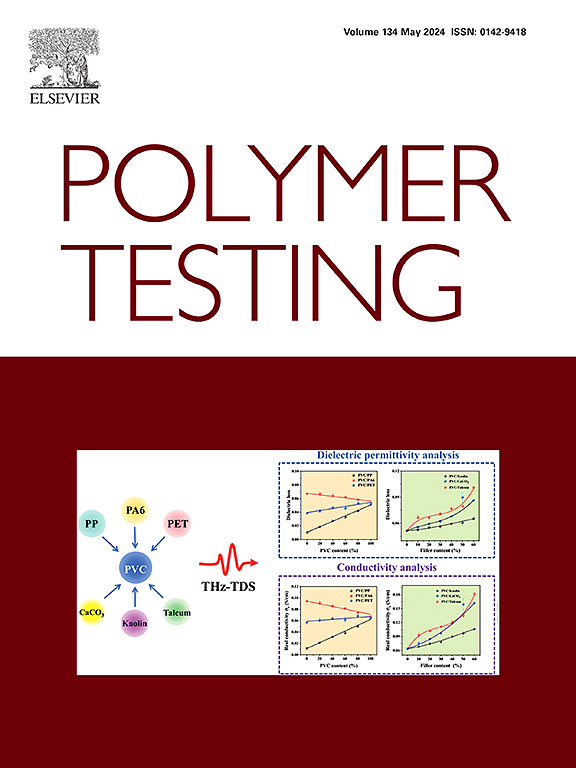Energy evolution characteristics and failure mechanism of coal confined by CFRP jackets subjected to different loading rates
IF 5
2区 材料科学
Q1 MATERIALS SCIENCE, CHARACTERIZATION & TESTING
引用次数: 0
Abstract
To reveal the improvement effects of Carbon fiber reinforced polymer (CFRP) jackets on the strength and deformation characteristics of coal samples, and the energy transformation mechanism during the failure process of coal samples under different loading rates. In this study, uniaxial compression tests were conduct on 28 coal samples, the results indicated that both the loading rate and the number of CFRP layers significantly influenced the energy evolution process of the coal samples. The total energy growth ratio of coal samples confined by single and double layer of CFRP jackets ranging from 11.86 to 23.46 and 32.002–56.066, respectively, with the total energy at failure of the double layer samples being 1.8 times that of the single layer ones. The number of CFRP layers significantly enhances the total energy at the peak point and its growth ratio of the coal samples. At the minimum (maximum) loading rate, the growth ratio of the dissipation energy rate at the peak point decreases with the increase of CFRP layers. Additionally, the value at the maximum rate is approximately 6.03–8.87 times greater than that at the minimum rate. The elastic energy consumption ratio exhibited a ‘fishhook-shaped’ trend as axial deformation increased. The use of CFRP jackets can effectively improve the energy storage mechanism of coal samples. Therefore, studying the energy dissipation and failure behavior of CFRP confined coal samples subjected to different loading rates is crucial for reducing the risk of accidents caused by coal pillar instability.
求助全文
约1分钟内获得全文
求助全文
来源期刊

Polymer Testing
工程技术-材料科学:表征与测试
CiteScore
10.70
自引率
5.90%
发文量
328
审稿时长
44 days
期刊介绍:
Polymer Testing focuses on the testing, analysis and characterization of polymer materials, including both synthetic and natural or biobased polymers. Novel testing methods and the testing of novel polymeric materials in bulk, solution and dispersion is covered. In addition, we welcome the submission of the testing of polymeric materials for a wide range of applications and industrial products as well as nanoscale characterization.
The scope includes but is not limited to the following main topics:
Novel testing methods and Chemical analysis
• mechanical, thermal, electrical, chemical, imaging, spectroscopy, scattering and rheology
Physical properties and behaviour of novel polymer systems
• nanoscale properties, morphology, transport properties
Degradation and recycling of polymeric materials when combined with novel testing or characterization methods
• degradation, biodegradation, ageing and fire retardancy
Modelling and Simulation work will be only considered when it is linked to new or previously published experimental results.
 求助内容:
求助内容: 应助结果提醒方式:
应助结果提醒方式:


